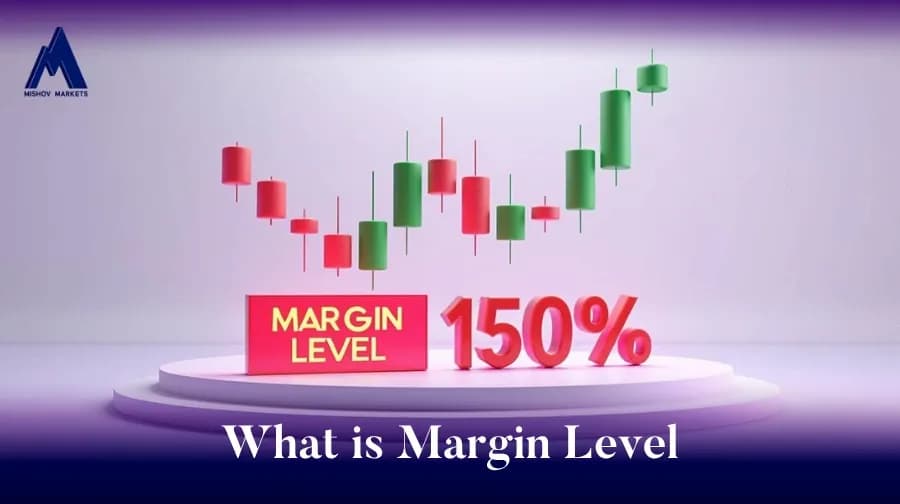What is the Margin Level

Margin-level trading is a cornerstone of modern trading, particularly in leveraged markets like forex. It provides a clear picture of an account's financial health by measuring the relationship between equity and used margin. A well-managed margin level ensures traders can navigate volatile markets while minimizing the risk of forced liquidations. By understanding the dynamics of margin levels, traders can better assess risks, manage leverage effectively, and make informed decisions to sustain their trading performance. Whether you’re a novice or a seasoned trader, a solid grasp of margin-level trading is essential for long-term success in the unpredictable world of trading.
What is the margin level and how is it used in trading?
Margin level trading is a crucial financial metric widely used in trading, especially in margin trading and forex trading, to evaluate the overall health of a trader's margin account. It is a vital indicator of how much of a trader's available funds are allocated to open positions, it plays a significant role in assessing the risk of a margin call. In simple terms, the margin level helps traders determine their account's safety buffer by showing the ratio of their equity (total account value, including unrealized profits or losses) to the used margin (the portion of funds set aside as collateral for active trades). This percentage is not just a number—it’s a lifeline for traders. A high margin level trading reflects a well-buffered account, indicating the trader has sufficient room to sustain price fluctuations. Conversely, a low margin level signals heightened risk and a looming possibility of a margin call, where the broker may send you an alarm that your account requires additional funds or your account will face stop-out and close positions to cover potential losses. In essence, the trading margin level is the trader’s dashboard for monitoring account safety and managing leveraged positions. By keeping a close eye on this metric, traders can navigate the dynamic and often unpredictable forex market with greater confidence and control.
How It’s Used:
1. Risk Monitoring:
Margin level trading helps traders and brokers monitor the risk level of a trading account. A low margin level indicates high risk and the possibility of a margin call.
2. Margin Call Threshold:
Brokers set a specific margin level threshold (e.g., 100%, 80%, or lower). If the margin level falls below this threshold, the trader may receive a margin call, requiring them to either deposit more funds or close some positions to reduce the used margin.
3. Stop-Out Threshold:
Brokers set a specific margin level threshold (e.g., 30%, 20%, or lower). If the margin level falls below this threshold, the trader's biggest losing position will be closed automatically in order to reduce the used margin, hence the increase in the margin level to maintain account stability.
4. Leverage Management:
The margin level trading helps traders gauge how much leverage they are using. A higher margin level indicates that the account has more room for price movements before reaching critical levels.
5. Trading Decisions:
Knowing the margin level helps traders decide whether they can open new positions or need to manage existing ones to avoid liquidation.
How to calculate margin levels in Forex?
Calculating the margin level in forex is a straightforward process that helps traders monitor their account's health and risk exposure. The formula for calculating the margin level is:
margin level=(Equity)÷(used margin) × 100
*The result is expressed as a percentage.
Here’s a step-by-step explanation of the components and how to calculate it:
1. Identify the Equity
-
Equity is the total value of your trading account, which includes:
-
Your account balance.
-
Any unrealized profit or loss from open positions.
Equity = Account Balance + Unrealized profit/loss
2. Determine the Used Margin
-
Used Margin is the portion of your account balance that is locked by your broker to maintain your open positions. It depends on:
-
The position size.
-
The leverage offered by the broker.
-
The margin requirement for the currency pair being traded.
For example, if you open a trade with a margin requirement of $1,000, that amount is considered your used margin.
Example Calculation
Imagine you have:
-
Account Balance: $5,000.
-
Unrealized Profit/Loss: $500 (profit).
-
Used Margin: $2,000.
First, calculate your equity:
Equity=5,000+500=5,500
Now, calculate the margin level:
Margin Level: 275%=(5500)/(2000) × 100
In this case, your margin level is 275%, which is considered a safe margin level forex.
Margin Level and Its Relationship to a Margin Call
The margin level and margin call are two interconnected concepts in margin trading forex. Understanding their relationship is crucial for managing risk and maintaining account stability.
We explained the margin level with the margin level calculator formula. But now you need to know about call margin.
What is a Margin Call?
A margin call occurs when the margin level falls below a specific threshold set by the broker (e.g., 100%). At this point:
-
The broker alerts the trader that their account no longer has sufficient equity to maintain open positions.
-
The trader is required to deposit additional funds or close some positions to free up the margin.
Relationship Between Margin Level and Margin Call
Threshold for a Margin Call: Brokers set a margin call level (commonly 100%). When the margin level drops to this threshold, the trader's equity equals the used margin, signaling that they no longer have a free margin to sustain additional market movements.
Risk Escalation: A declining margin level indicates shrinking equity relative to the used margin, often caused by market losses.
If the market moves further against the trader, the margin level may fall below the margin call level and after that stop-out level, triggering a forced liquidation.
Prevention Through Monitoring: By regularly checking the margin level, traders can act before reaching the margin call threshold. This may involve closing positions, reducing position sizes, or depositing more funds.
-
Understanding the relationship between margin level and margin calls empowers traders to manage their positions effectively, avoid forced liquidations, and maintain a healthy trading account.
The Impact of High and Low Margin Levels on Trading
In margin level trading, the margin level plays a critical role in determining the health and sustainability of a trader's account. It directly influences the trader’s ability to manage open positions, navigate market fluctuations, and avoid forced liquidations.
Here’s how high and low margin levels impact trading:
|
Impact of a High Margin Level | Impact of a Low Margin Level |
|
Lower Risk of Margin Calls |
High Risk of Margin Calls |
|
Increased Flexibility for New Trades |
Limited Ability to Open New Trades |
|
Resilience During Market Volatility |
Increased Emotional Stress |
|
Enhanced Risk Management |
Vulnerability to Market Movements |
The Importance of Margin Level trading Management in Professional:
One of the factors that helps you understand your position and account level in Forex is your Margin Level. The Margin Level trading helps you assess the remaining capital in your account. As a professional trader, you should aim to keep your Margin Level above 100%. To maintain your Margin Level within an appropriate range, you should use risk management tools such as Take Profit (TP) and Stop Loss (SL), only using 1% of your equity per position and similar techniques. As mentioned earlier, consistently monitoring your margin-level trading and implementing strong risk management plans can lead to profitable outcomes.
Ultimately, the higher your Margin Level percentage, the better the status of your trading account, and vice versa.








